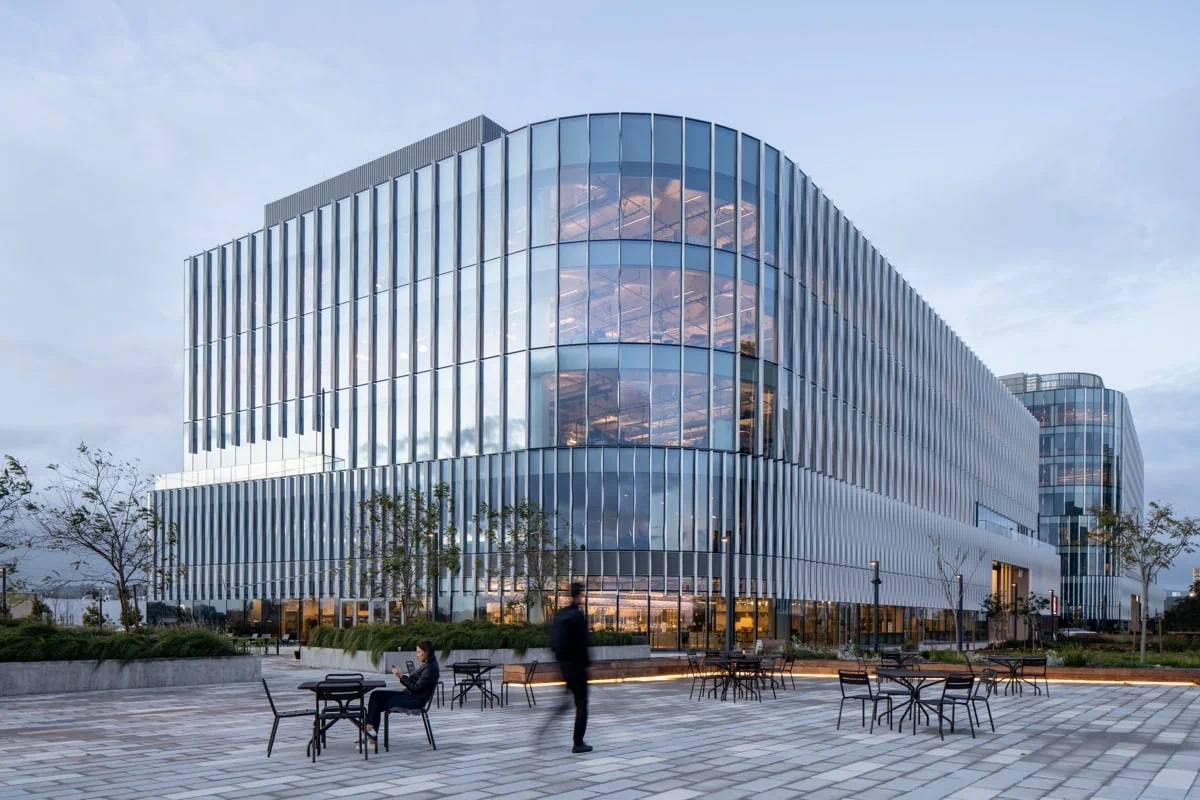In the last four years, the global workplace has undergone a complete transformation. When businesses shut their physical doors in 2020 to shift operations online, remote work became the new normal—and stayed that way for longer than any of us ever expected.
After years of adjusting to this new virtual paradigm, we’re witnessing the tide shift yet again as companies ask, and in some cases tell, employees to come back to the office.
Luckily, the office has undergone a transformation of its own, fully embraced by projects like Mission Point. With enhanced environments that foster better collaboration, innovation, and overall employee satisfaction, the workplace isn’t exactly the same as we remember it.
The State of Remote Work
According to the U.S. Census Bureau, the number of Americans working from home has fallen dramatically since its pandemic highs. Today, fewer than 26% of U.S. households still have someone working remotely at least one day a week, a significant drop from the early 2021 peak of 37%.
We can expect to see those numbers continue to fall as more companies encourage, and in some cases require, employees to return to the office. According to a report from Resume Builder, a whopping 90% of companies plan to implement return-to-office policies by the end of 2024. Perhaps even more telling, only 2% of business leaders said their company never plans to require employees to work in person.
Reports from major organizations like Google, Amazon, and Apple show a concerted effort to bring workers back to their physical workplaces. Even Zoom, the company that made remote work possible, thinks employees near an office “need to be onsite two days a week to interact with their teams.”
The Case for a Comeback
Zoom may have enabled the greatest work-from-home experiment of our lifetimes, but the company isn’t off base in thinking face-to-face interaction may be a better tactic. According to a recent study, over three-fifths of all employees report poor virtual communication and collaboration as their biggest challenge when it comes to remote work, and over three-quarters say they are experiencing “Zoom fatigue” and want less meetings.
In-person collaboration leads to more spontaneous brainstorming sessions, quicker problem-solving, and more robust team dynamics. A study by Stanford found that those who work in a collaborative rather than individual setting are 50% more effective at completing tasks, boosting their intrinsic motivation and helping them become more engaged in their work.
Face-to-face communication often reduces misunderstandings that occur in virtual settings. Non-verbal cues, such as body language and facial expressions, play a crucial role in effective communication. In an office setting, these cues help build trust and rapport among team members, facilitating smoother and more effective interactions.
Having employees work together in the same physical space also helps maintain and strengthen company culture. Regular in-person interactions create a sense of community and belonging, which is hard to achieve in a remote environment. Shared spaces and communal activities foster relationships and a shared sense of purpose, contributing to higher employee morale and engagement.
About those Shared Spaces
As companies push for employees to return to the office, their leaders are realizing that a makeover is in order. In an effort to enhance the employee experience, employers are investing in creating more attractive and comfortable workspaces. Modern offices are being redesigned to include a variety of amenities to create a commute-worthy work environment.
Today’s employees want more than just a desk and a chair. They seek amenities that support work-life balance and well-being. According to a survey by JLL, top amenities that employees desire include wellness programs, fitness centers, flexible workspaces, and advanced technology infrastructure. Companies like Google and Salesforce are leading the way by offering on-site gyms, nap pods, gourmet cafeterias, and even pet-friendly policies.
Modern office designs are increasingly focused on creating flexible and comfortable environments. This includes open-plan areas for collaboration, quiet zones for focused work, and versatile meeting spaces equipped with state-of-the-art technology. These features cater to various working styles and needs, making the office a more appealing place to spend time.
Sustainable office design is also gaining traction. Employers are incorporating green building practices, such as energy-efficient systems, natural lighting, and indoor plants to create healthier and more environmentally friendly workspaces. These efforts not only reduce the company’s carbon footprint but also improve the physical and mental well-being of employees.
As more employers ask employees to return to the office, they must offer spaces and perks that create excitement and make the journey back more appealing. After all, the future of work is not about reverting to old norms but evolving to meet the needs of the modern workforce by blending the best of both worlds in order to foster collaboration, innovation, and well-being.
Innovative mixed-use projects like Mission Point are at the forefront of reimagining the workplace. These types of initiatives offer attractive, green workspaces with convenient access to numerous amenities like restaurants and services, outdoor break areas, public transportation options, aligning well with the current trend of enhancing employee well-being and satisfaction. By promoting better collaboration and enhancing overall employee satisfaction, modern workplaces are creating more engaging and productive environments that meet the needs of the contemporary workforce, leading the way to a successful return to the office.

